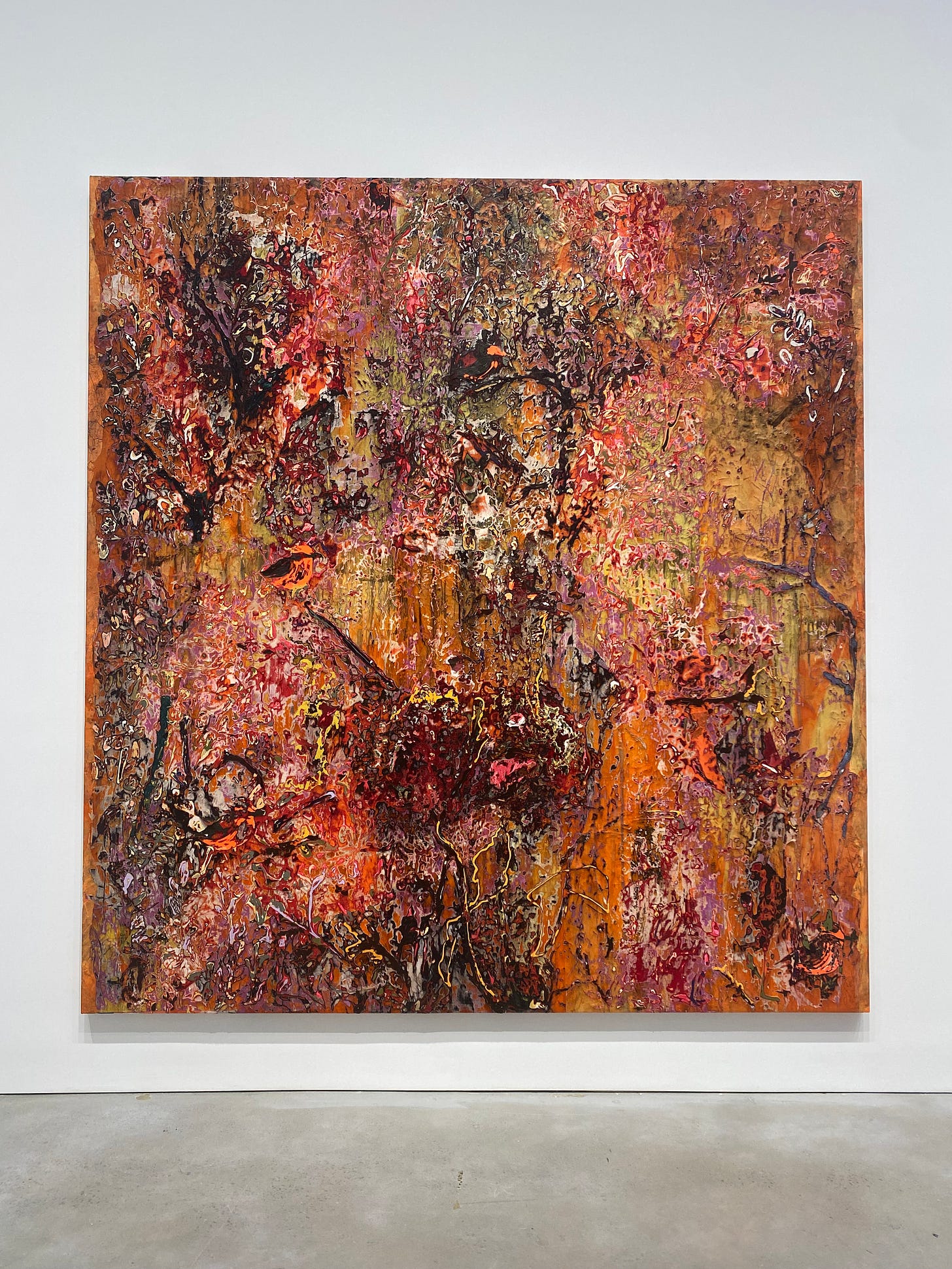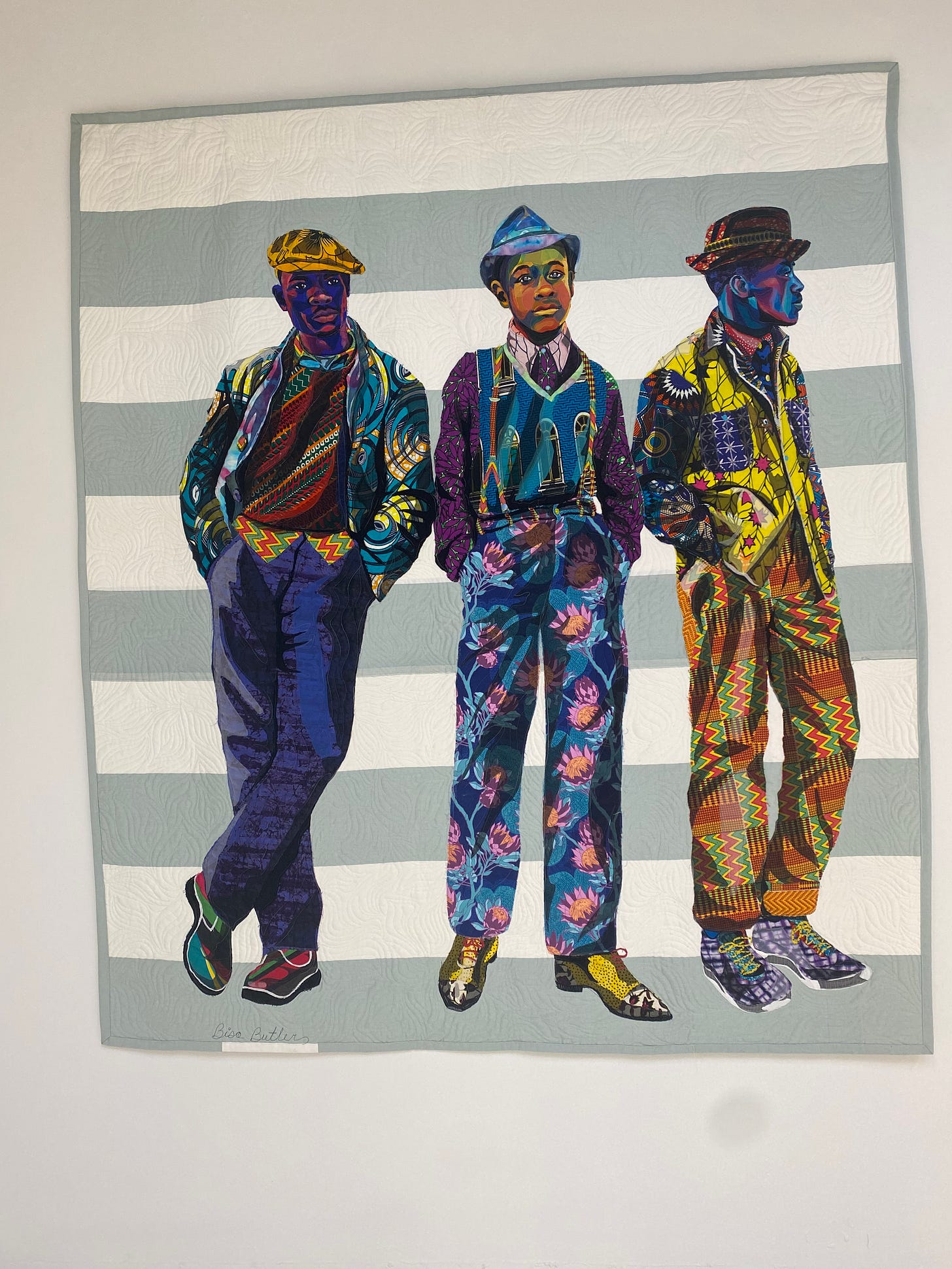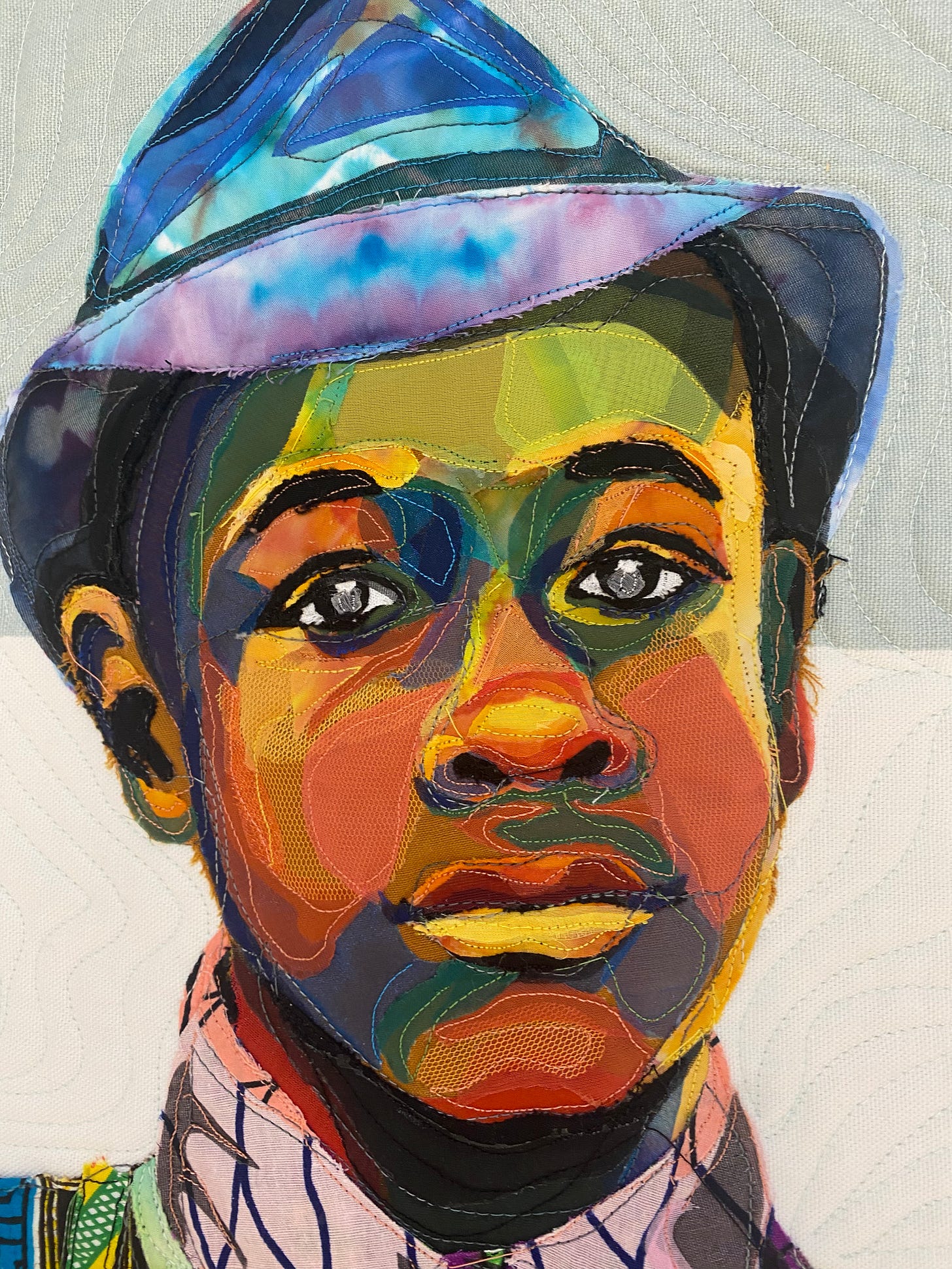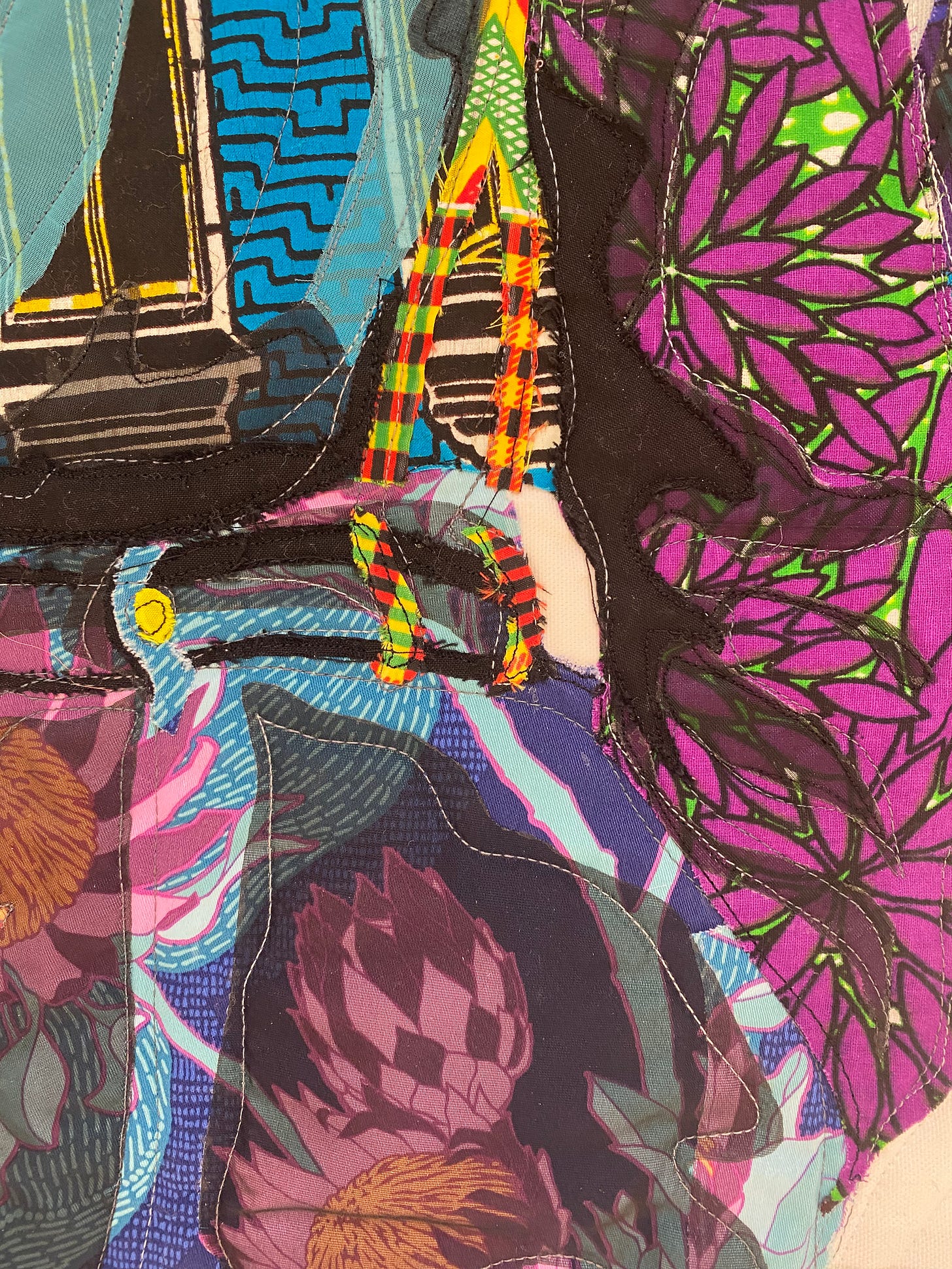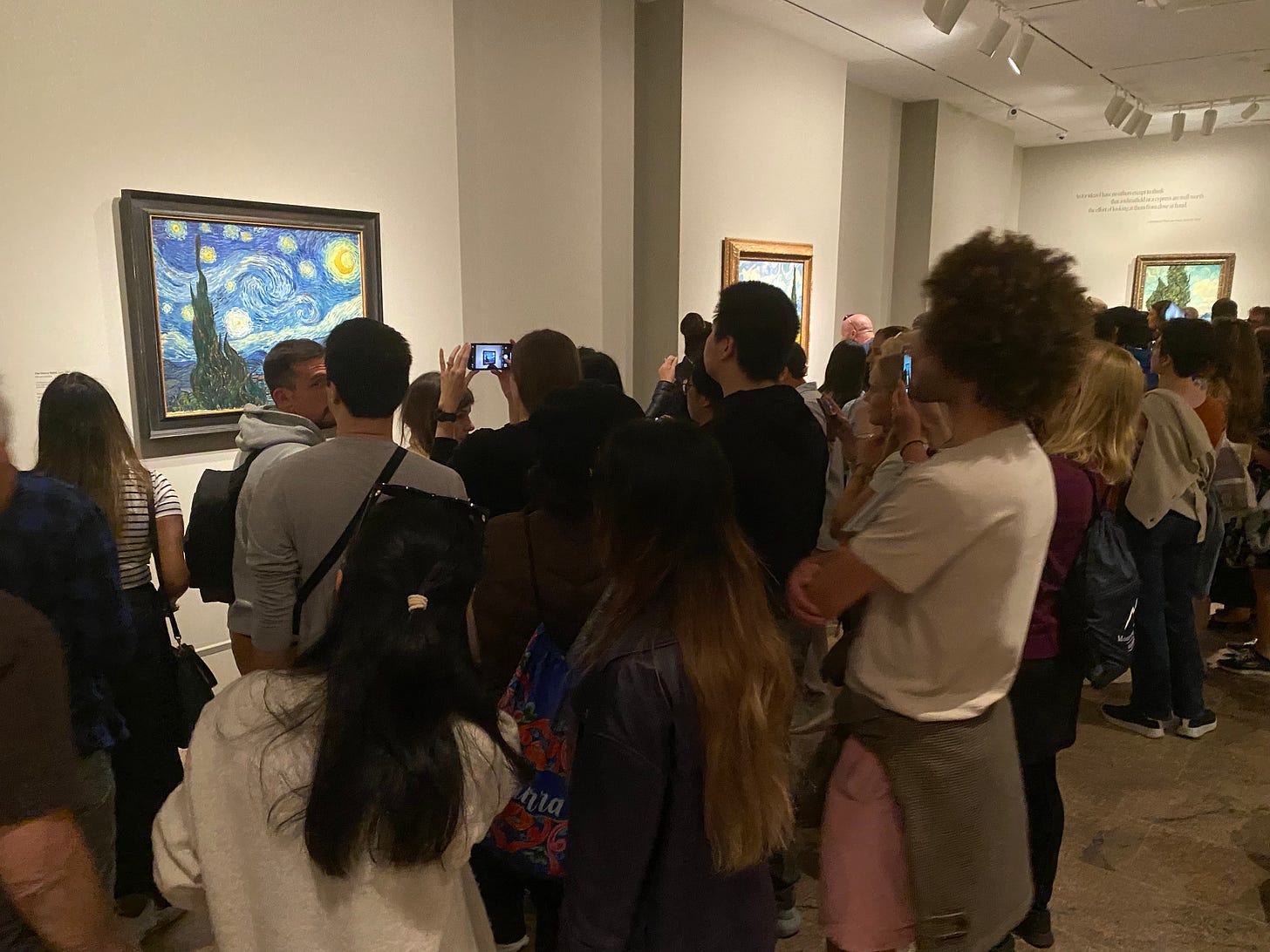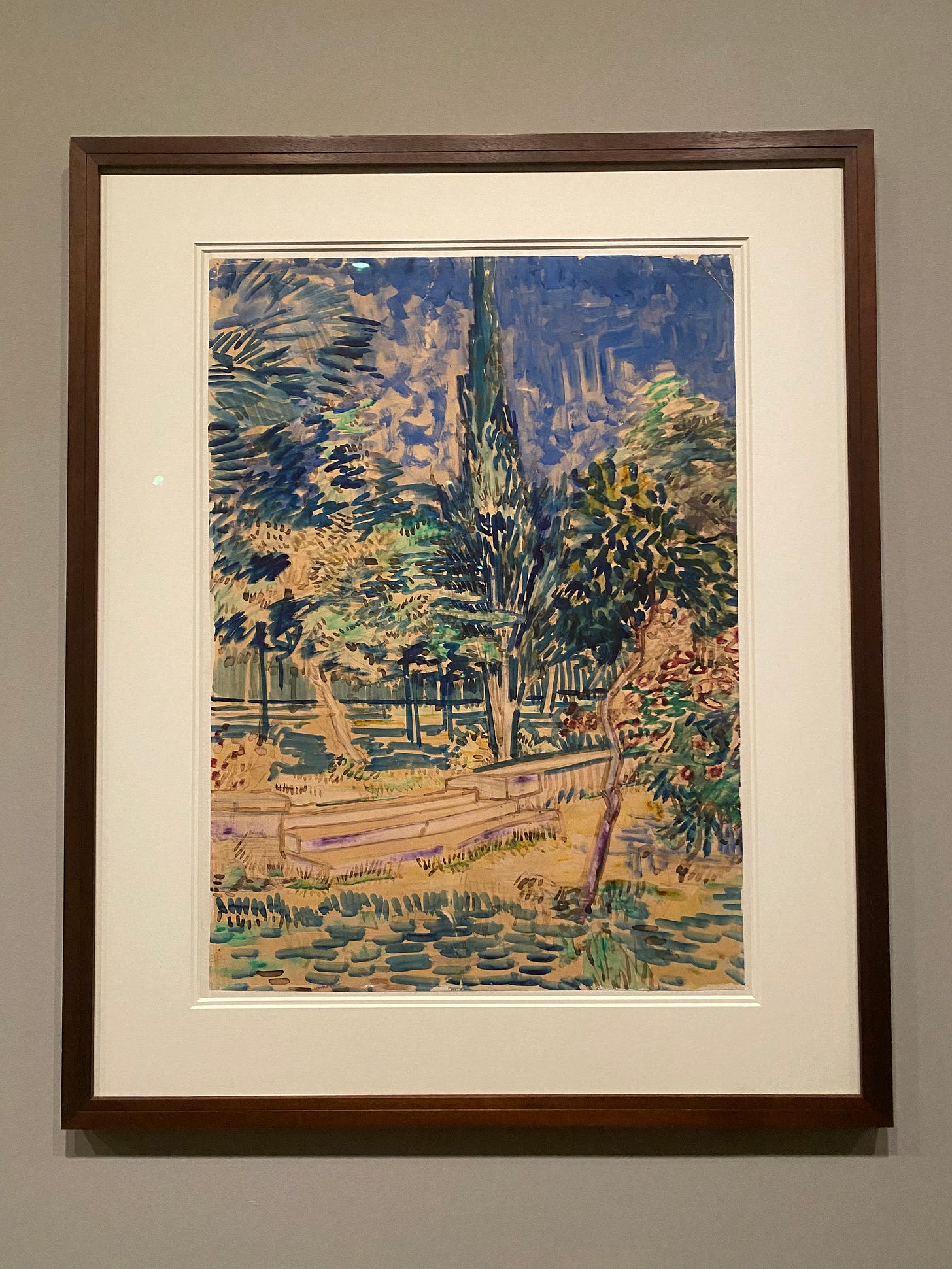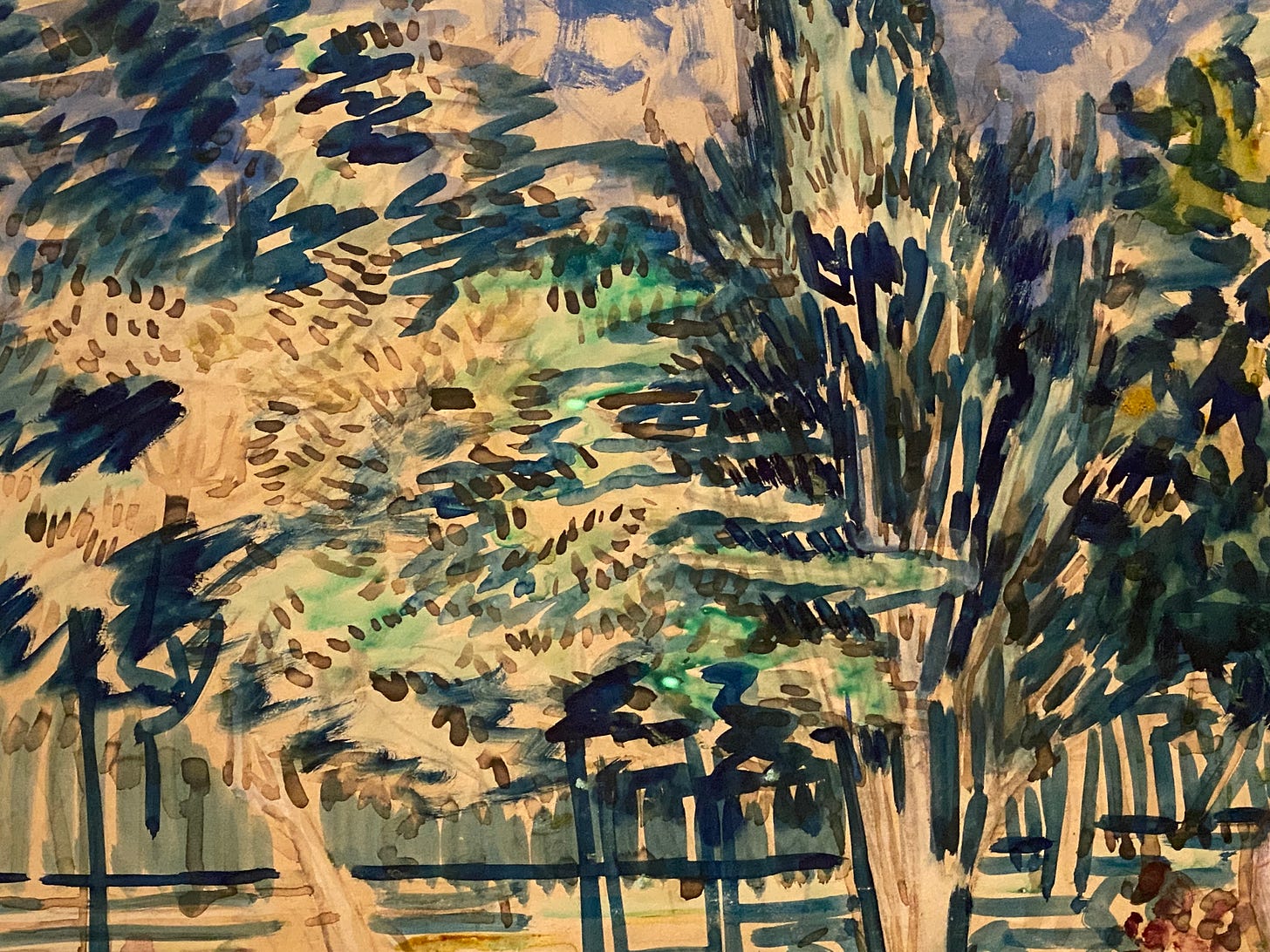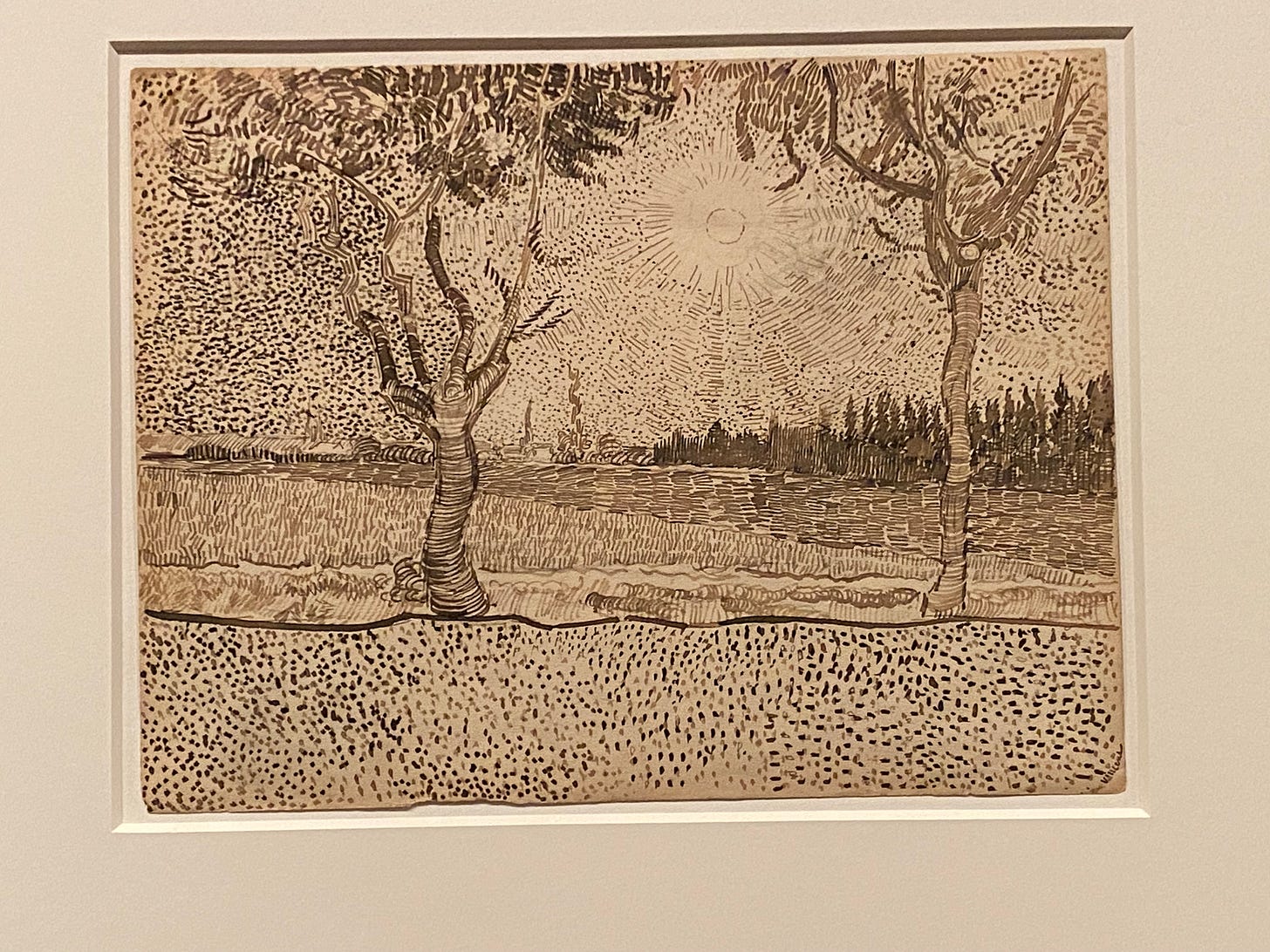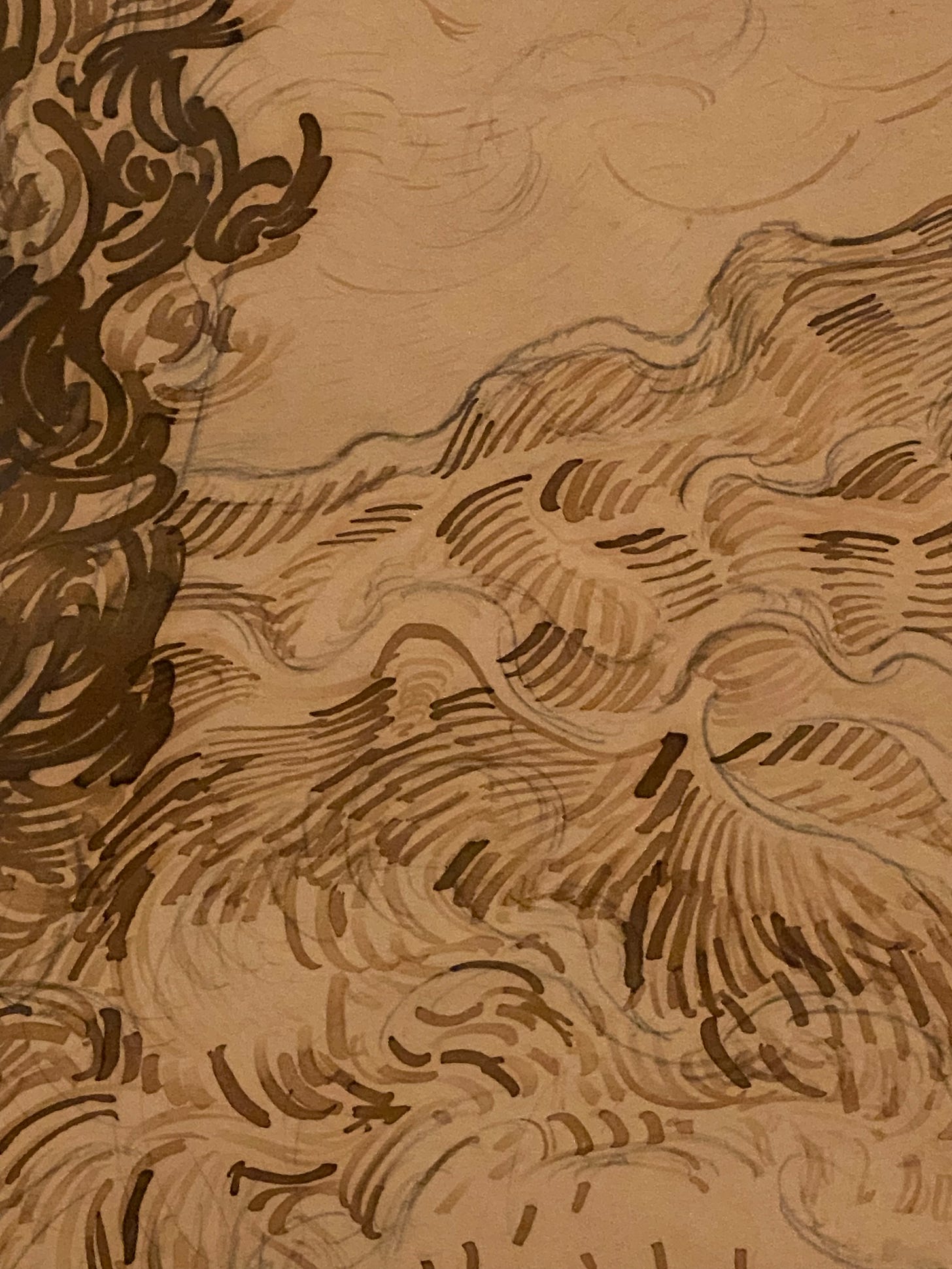How to Look at Art Like an Artist
Come gallery hopping with me in NYC and get UP CLOSE to some art.
Helllloooo Grown-Ups Table!
First a quick THANK YOU to everyone who tried and shared the “remembering” drawing assignment last week. It was so powerful and personal and seems like it sparked a ton of memories, which is fascinating... If you haven’t checked out the chat where GUT members share our artwork, I highly recommend. Related, if you haven’t introduced yourself to the group yet, head over and say hi. We are all over the world!
And I happen to be in NY right now. It’s the best times of year here: perfect weather, the city is hopping, and there is SO much good art to see. So this week I’m taking you with me to visit the museums and galleries and look at art. But not just any quick wander and glance. We are going to look at it closely, as we artists do.
Get Up Close to the Art
One of the best things about seeing art in person is being able get UP CLOSE. To put our noses to the paper and sniff (not TOO close - we don’t want to set off the alarm.) Getting up close is the only way we can see how an artist actually MADE the artwork. It’s also how you can spot the artists: we are the ones two inches from the canvas, making the guards nervous and obliterating everyone else’s view.
Today in the GUT I’m going to show you a few of my favorite things I’ve seen in NY this week, and then we’re going to look at those pieces UP CLOSE and see what we can learn. And don’t worry, you won’t freak out any guards. I already took care of that for you. ;)
Ready? Put on your walking shoes. First stop on our NYC art tour….
Mark Bradford
Mark Bradford’s work was a total surprise. Despite the amazing write up in the New York Times, some friends and I just stumbled on the show at Hauser + Wirth Gallery in Chelsea. And thank goodness we did. Mark Bradford’s huge multimedia paintings often incorporate items that reference his childhood growing up in his mother’s hair salon, including paper, bits of foil and such. His work is always layered - layered materials, layered meaning. And his new paintings (and sculptures) are HUGE. And when I got up close they took my breath away.
Let’s take a look at one of his paintings at a distance and then close up.
At a distance, it looks purely abstract - kind of organic... But if you look closely what do you see? (See the birds??) There’s a lot going on in this painting. Colors, textures, depth… So many layers.
Now let’s get SUPER CLOSE.
It’s like a whole new world inside the same painting! So many layers of colors built up and scraped away to create these colors and textures. Does it remind you of anything? Spark any feelings? How do you think he created this texture? What materials and techniques would you imagine trying if you wanted to achieve this? What would it feel like to create something like this? Would it be hard work? Time consuming? Tedious or fun? What do you think it was like for Mark Bradford to make these?? We can only start to really understand a painting by asking these questions. And we can only ask these questions when we get up close.
Bisa Butler
You’ve heard me talk a lot about Bisa Butler’s gorgeous quilt portraits of African Americans - we even dedicated a podcast episode to her work. So it was a total joy to see her quilts in person, hanging huge and proud, in a big, open two story gallery space in New York. Here is one of my favorites from the show. It’s about 9x7 feet, and hangs loose on the wall.
Now here’s a super up close view of the young man in the middle. Wow, right? So much detail. How many different pieces of fabric do you think she used to create his face? How many colors went into one section of his face? Now check out the stitching….
It’s lot like drawing, isn’t it? She’s using it to layer the fabrics but also as a drawing line. And look closely and you can see she uses different colors of stitching! It also looks a lot to me like a topographic map. What meaning could that hold?
Here’s one more close-up view of his shoe. When we get this close it becomes abstract like Mark Bradford’s painting. And we can see how she is layering a dark transparent layer over the colorful fabric to create a shadow. She’s drawing and painting with the with the fabric. How do you think she’s making the decisions with colors, fabrics and lines? We can only start to wonder once we get up close and look closely.
Van Gogh
There is a huge new Van Gogh show at the Metropolitan Museum of Art focusing on his paintings of Cypress trees. And apparently the entire world also decided to go on Thursday. My friend and I waited over 2 hours (!) just to get in to the show. When we finally did, it looked like this:
Not anyone’s favorite way to look at art.
But I managed to sneak through the crowds and get up close to some of his work, and it was worth it. The texture Van Gogh created with simple lines in his drawing and paintings are jaw-dropping. I’ll show you a few of them here.
Van Gogh painted this painting when he was first institutionalized and didn't have his supplies with him. Using what he could find - old brushes, spare ink and paint, inexpensive paper - he painted what I think it might be my favorite painting of his! Look at the life and looseness in his lines. Look at the Looking he was doing.
Now here’s a close up of that same painting. Try to figure out how he made the painting: the colors he used, the size of brushes, the order of the brush strokes…
Here’s another drawing that blew me away. look at how he created an entire landscape out of texture marks.
What material was he using? What techniques? How might you try to create a drawing made with pure texture lines like this? (We will do this in a future GUT assignment :)
And here’s a close up of a different but similar drawing. What material is he using? Ink it looks like. Is he drawing with a pen or paintbrush? Can you tell in what order he drew? In which direction? Was he drawing fast or slow? How deliberate was he?
And if you can imagine that, can you imagine a little more about Van Gogh’s experience making this drawing? We see so much more when we look up close and use our imagination and personal experience with mediums. And again, unless we get up close and look really quickly, we can’t even start to ask these questions….and there’s so much to learn from for our own work, too.
So cool, right??
This is one of the biggest benefits of going and seeing work in person. And even if you can zoom in on a computer screen, you can’t see the texture, weight, shadows, and ENERGY of an artwork through a photo of it. If we are lucky enough to get to see art in person, It’s always a gift.
One last project:



